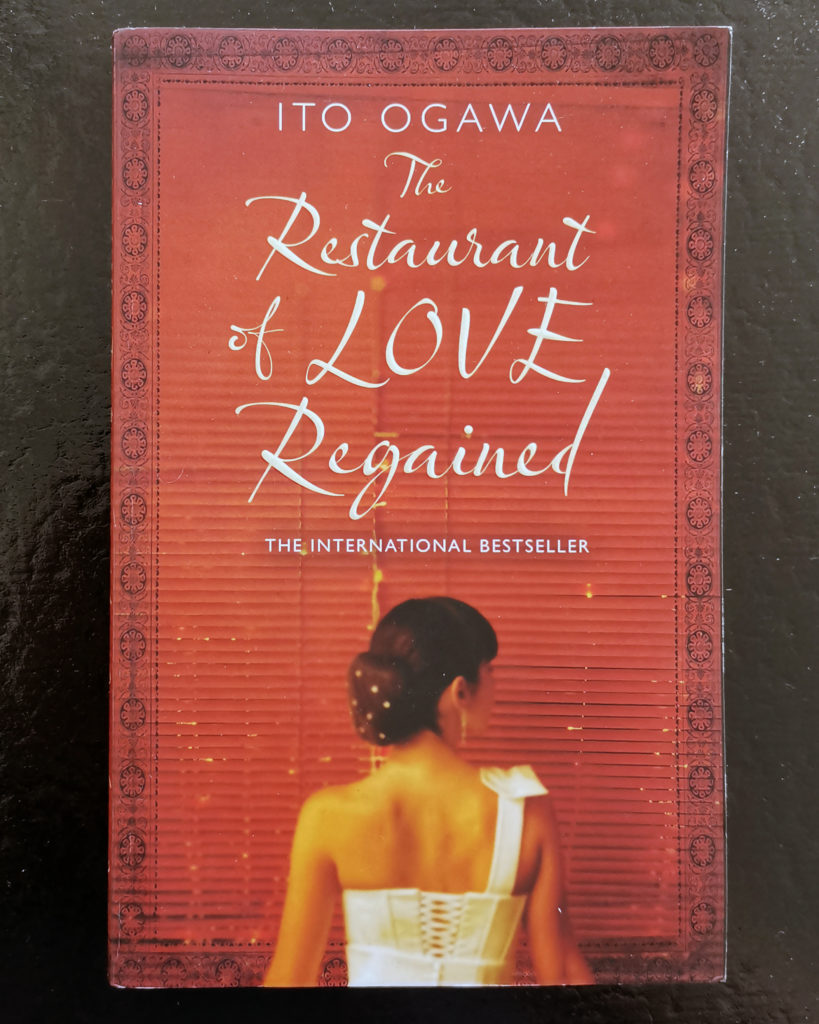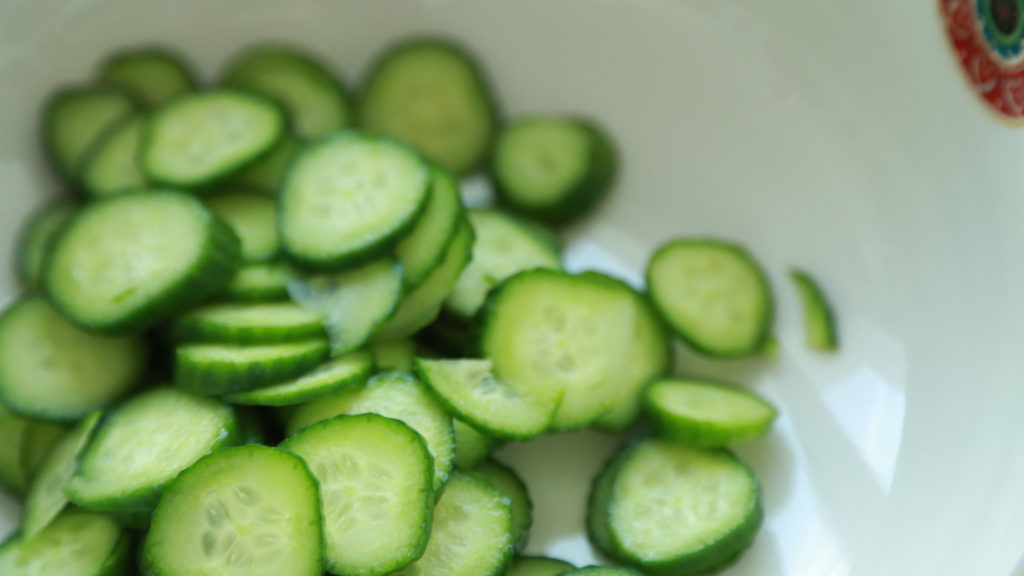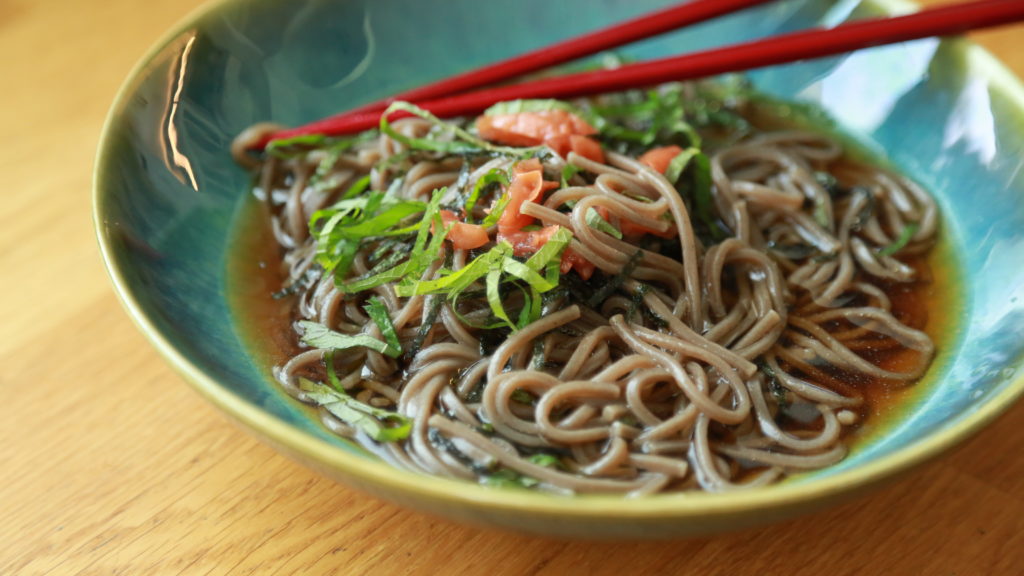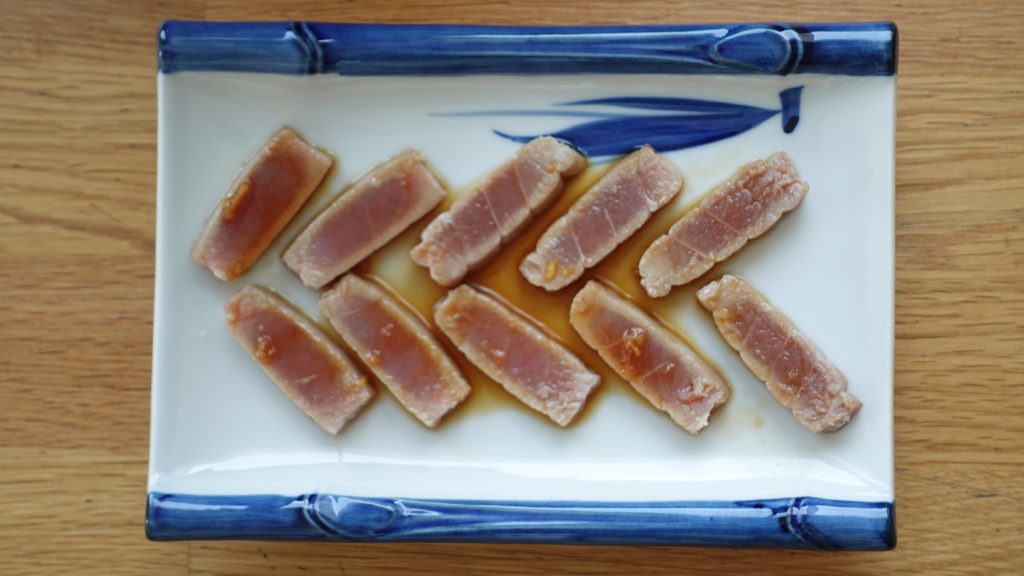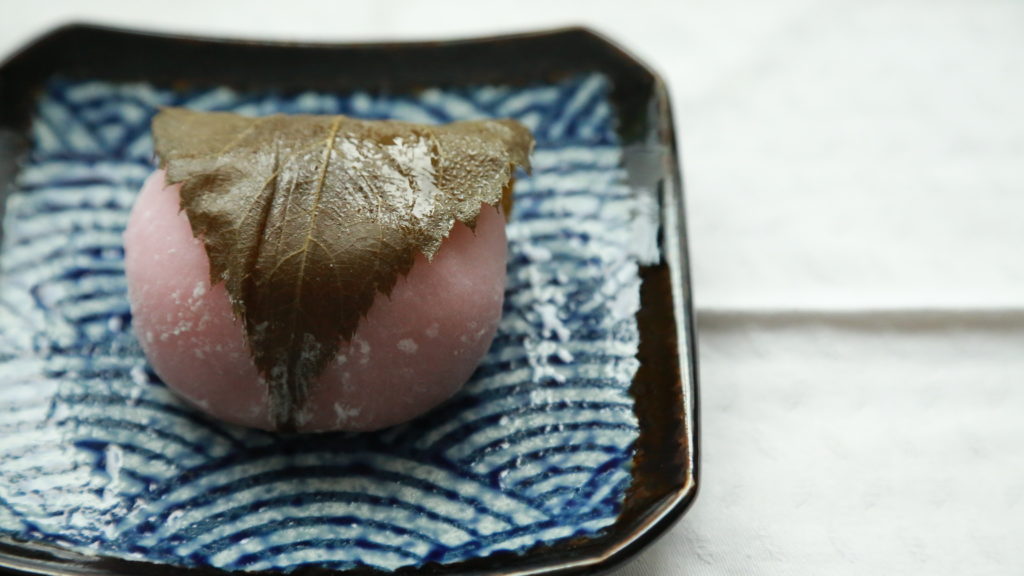I couldn’t have ended my Japanese reading month without preparing something that makes me travel far far away. And how could I have resisted the urge of cooking when reading Ito Ogawa’s bestselling novel The restaurant of love regained. This was the first Ito Ogawa novel I read, you might remember the first video in this series on her Tsubaki stationery store that I read in French, but our first meeting was brought on by food. So it was only fitting to try my hand at some Japanese dishes in honour of our encounter.
So let’s start preparing the simplest most satisfying entrée salad, while I take you through my reading impressions. A seaweed and cucumber salad, with an easy Japanese dressing.
The novel tells the story of a young woman that finds herself in need of returning to her mother’s home after her boyfriend clears out her apartment leaving her with no money and no possessions. So coming back home to seek refuge and figure out a game plan, she ends up opening a small boutique restaurant, focusing on local seasonal ingredients, but mostly on the personalities of her clients. This makes for a light coming of age novel, with accents of Japanese gastronomy, and as her other novel I read, a strong sense of mending broken family connections.
The writing is airy and uncomplicated, so it might seem like a skim-through Japanese chick lit. But I found some themes that were quite thought-provoking. Like the philosophy of eating. Having the luxury of ordering sushi in any major Western city, or maybe a ramen here and there, we often think that the whole Japanese cuisine is clear and simple. But the truth is that if we are not surrounded by connaisseurs, we rarely have the patience or curiosity to understand the carefully constructed Japanese meal. And in this respect, the novel has a very elegant approach to food, presented through the eyes of a young chef, along with her trials and errors in finding balance, subtlety and a holistic experience through food. I enjoyed the few detailed menus and their explanations, like this meal prepared for an old lady :
At first I thought of selecting the best local ingredients to create something that was kind to the body – like fried shiitake mushrooms, sesame tofu, root-vegetable soup or steamed-egg pudding. These are exactly the kind of things my grandmother had taught me to make. But after thinking about it a little more, I decided to scrap the idea and start again. Then I came up with another notion – a meal designed to express the full range of human emotion, from delight to sorrow and from anger to pleasure. It would be a stimulating dinner encompassing an array of flavours, with deserts being soft and sweet, and spicy dishes bursting with heat. A dinner of flavors I imagined she’d never tasted before. A dinner with the power to bring the dying cells of her body back to life. This is what I came up with.
Actinidia liquor cocktail
Bran-pickled apples
Oysters and sweet red sea bream carpaccio
Sangetan soup with a whole chicken brewed in shochu
Botargo risotto with freshly harvested rice
Lamb roast with wild mushroom garlic sauté
Yuzu sorbet
Mascarpone cheese tiramisu with vanilla ice cream
Dark espresso coffee
My first course in today’s Japanese menu is a cold soba noodle soup, that I’ve been wanting to make ever since reading Michelle Maisto’s food memoir The gastronomy of marriage, and if you haven’t seen my food memoir video I’ll leave the link here.
Buckwheat noodles are very Japanese in my mind, but I never know how to bring them together in a dish. This is an easy solution for a hot summer lunch or just a lazy evening in front of the tv. The essential thing to have in your cupboard is the tsuyu base, a concentrated soup base made up of yummy ingredients like kelp, bonito flakes, soy sauce, some tangy and sweet mirin, and of course many secret ingredients that a chef doesn’t divulge. Luckily, you can find it ready made in any Asian supermarket or online. For the toppings, it’s chef’s choice so I went with crispy seaweed, freshly chopped shiso leaves and umeboshi or salted pickled prunes. A drop or two of roasted sesame oil and voilà ! Almost instant magic, and a guaranteed journey for your tastebuds.
Full recipe HERE
The restaurant of love regained has been a joyful discovery of Japanese gastronomy, as much as it has brought to my attention big cultural gaps between my own heritage and the Far-East. Without spoilers but with a mindful mention of a possible trigger for anyone dealing with loss or simply struggling with the idea of death, I wanted to mention the strong sense of a completely different approach to the subject. Of course, I already knew through the traditions of samurais that death doesn’t have the same aura in Japanese culture as it does in my Judeo-Christian universe. But in this novel, I found some surprising scenes of serenity and acceptance when facing loss. I often notice the tragedy we tend to associate with something that is inevitable, and I struggle with society’s expectations on the subject, when I feel it is unnecessary and to some extent unhealthy. An idea that stuck with me after finishing the book, in a hopeful energy of life’s eternal balance.
My second course is an all-time favourite and a recent discovery all at once : a tuna tataki with miso glazed eggplant. Now tuna tataki is one of the easiest things you could make, the secret is to never over-cook it, and to make this brilliant sauce of course.I had a rather large tuna steak from the market so I made several strips out of it and grilled it in a very hot non stick pan for 30 seconds on each side. For the sauce, a tiny amount of grated ginger, orange juice, soy sauce, mirin and a drop of sesame oil and you’re done.
Full recipe HERE
For the eggplants I sliced them in half and baked them face down for about 30 minutes. Meanwhile, I mixed some miso paste with water, mirin, soy sauce and a little agave syrup, the splash of sesame oil I love and reduced it on low heat until it was silky and thick. then glazed my eggplants and baked them for a few more minutes, before finishing with some fresh chives under close surveillance of course. It was a new and creative way of cooking eggplants, a new classic in my cookbook.
Full recipe HERE
As for the dessert of my Japanese menu, I cheated and went for the store bought sakura mochi, complete with the pickled cherry leaf on top. A sticky and subtle flavoured delight to end a journey in a meal.
My Japanese April ends here, do have a look at my previous reviews, I’ve brought them all together in a Japanese Inspiration playlist that you can find HERE. This was a spontaneous project that brought immense joy to my month of April. Living proof that you can transform your every day life, just by finding a project that awakens your enthusiasm. All the rest will follow…
Until next time, enjoy your reading and your rituals !

